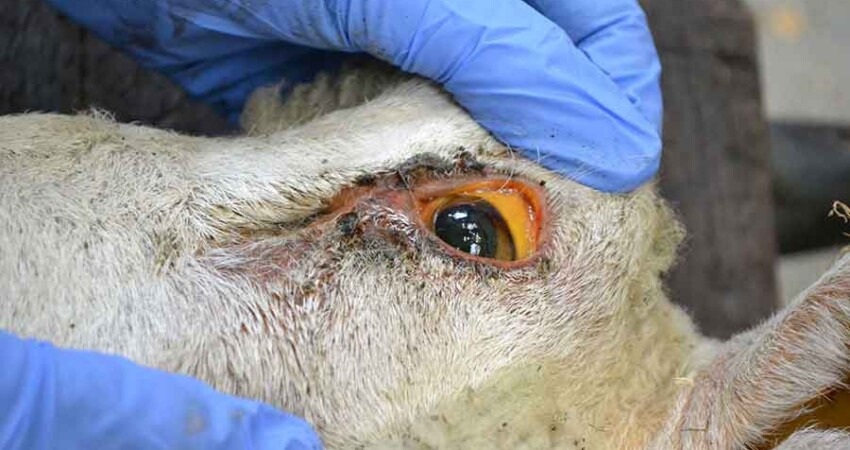

Sheep are particularly susceptible to the toxic effects of excess copper with clinical disease following a period of excess intake. It occurs when the liver’s capacity to store excess copper is exceeded and there is a sudden release of copper. This typically occurs after weeks or months of accumulation of copper and often coincides with a period of stress on the animal. The sudden release of copper by the liver causes haemolysis and irreversible damage to the kidney and the brain. Copper poisoning is slow to develop but sudden in onset.
Feeding concentrates containing high levels of copper, excessive administration of copper-containing mineral supplements or boluses, and grazing pastures which have been dressed in pig slurry are typical scenarios in which cases of copper toxicity in sheep may develop. However even a diet with an acceptable copper concentration can also cause subclinical toxicity if fed for long enough to vulnerable breeds.
Clinical signs of copper poisoning
The eyes and skin become jaundiced, Sheep spend time wandering aimlessly or head-pressing, Sheep become weak, Breathing becomes shallow and rapid, caused in part by the development of anaemia and Postmortem examination reveals an orange liver, black kidneys and red/brown urine.
Treating Copper poisoning
Treatment options are only effective in the early stages of clinical onset. The aim should be to prevent clinical disease in at-risk animals by either orally dosing animals or subcutaneously injecting them with ammonium tetrahiomolybdate to strip copper from the liver. Copper antagonists such as molybdenum and sulphur can be added to the diet to prevent further accumulation of copper & Contact your vet for advice
 Contact Jaguza Support
Contact Jaguza Support